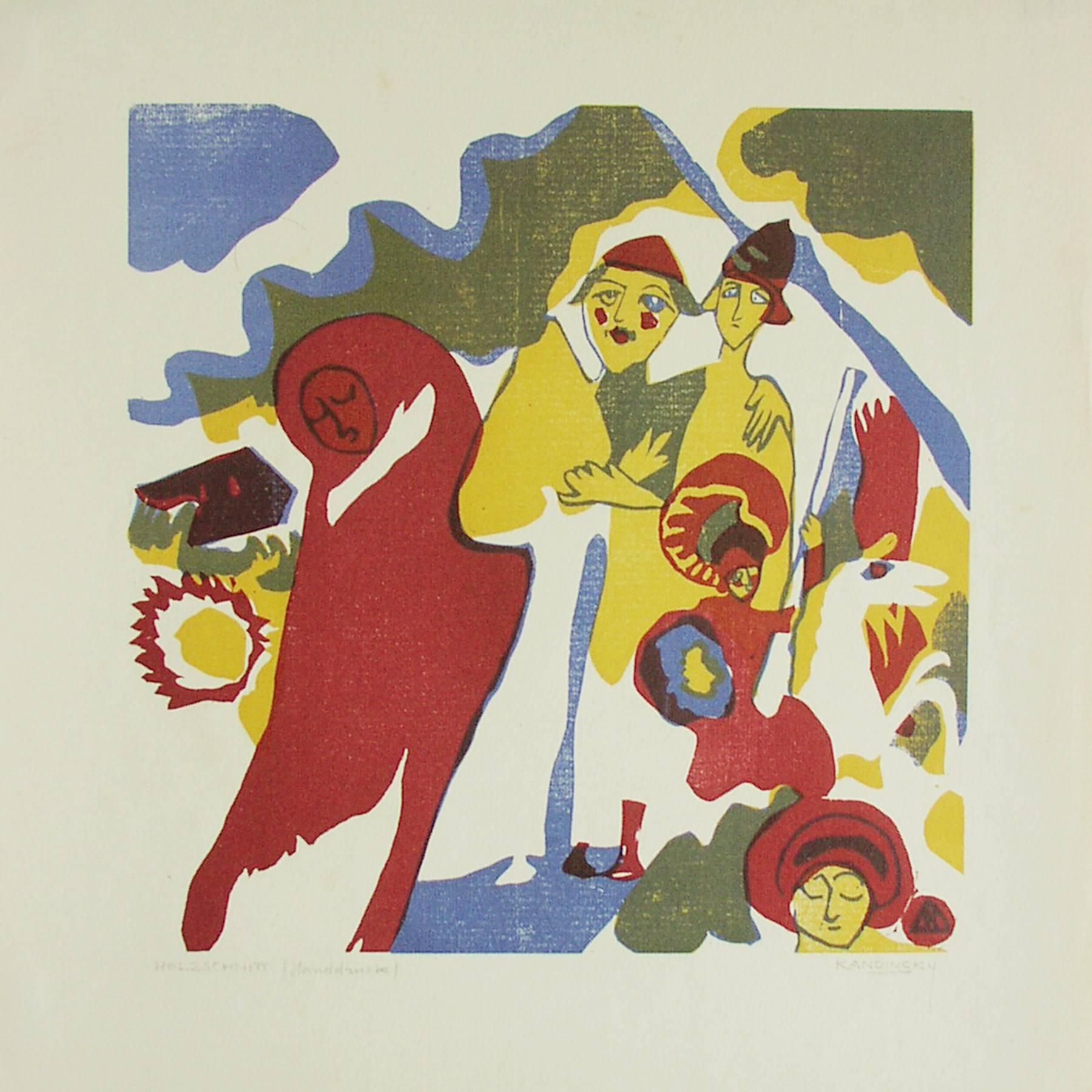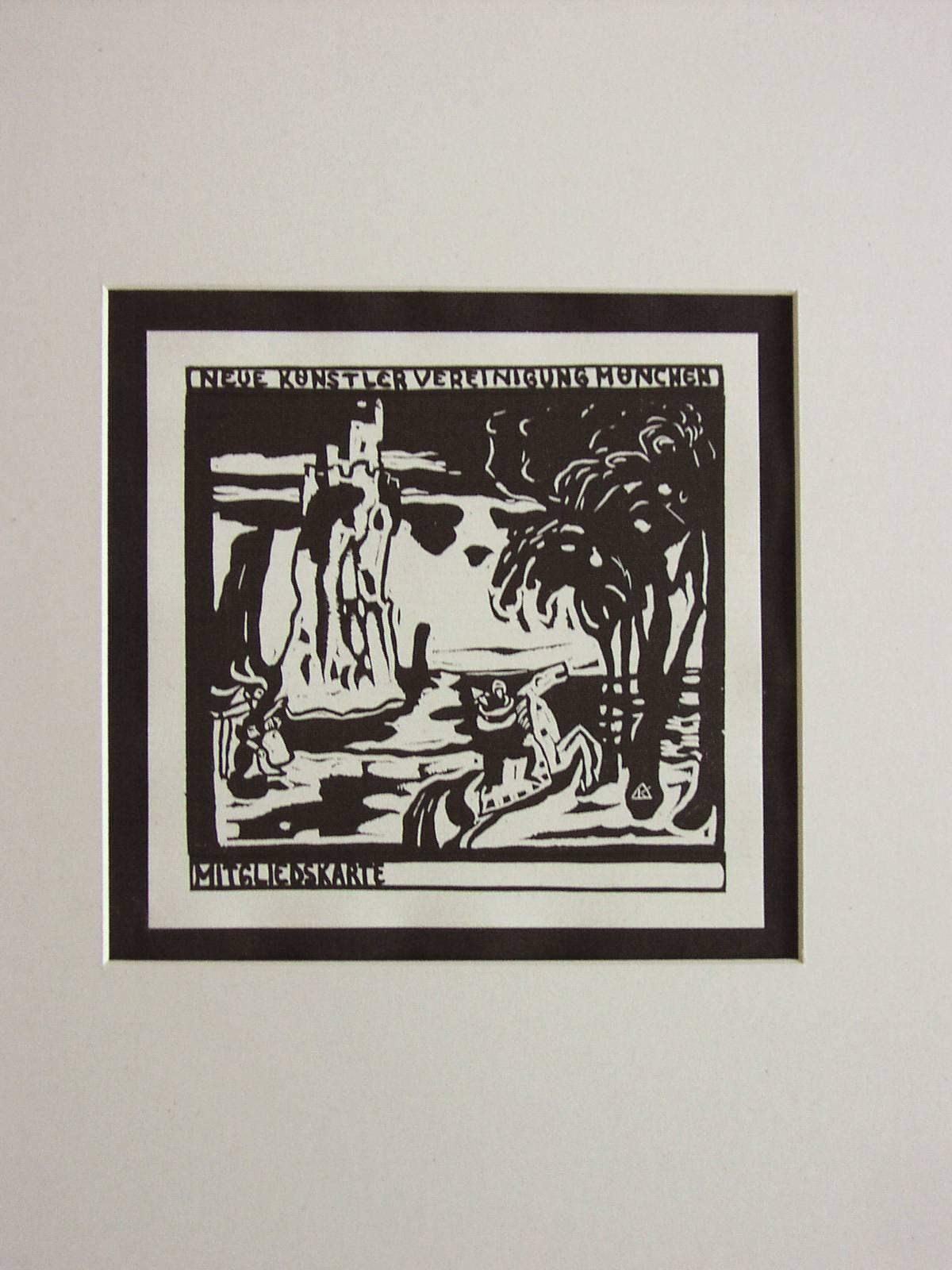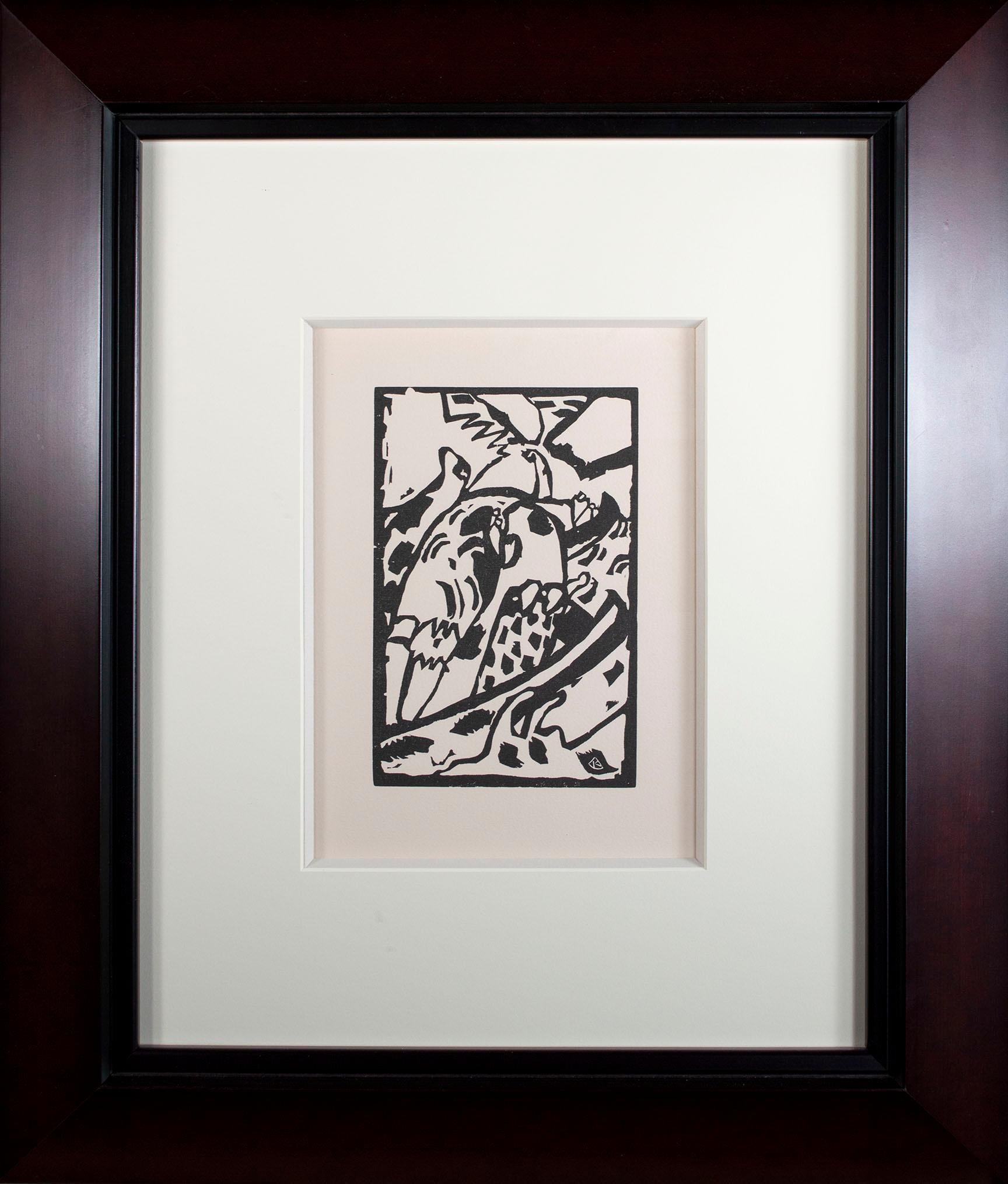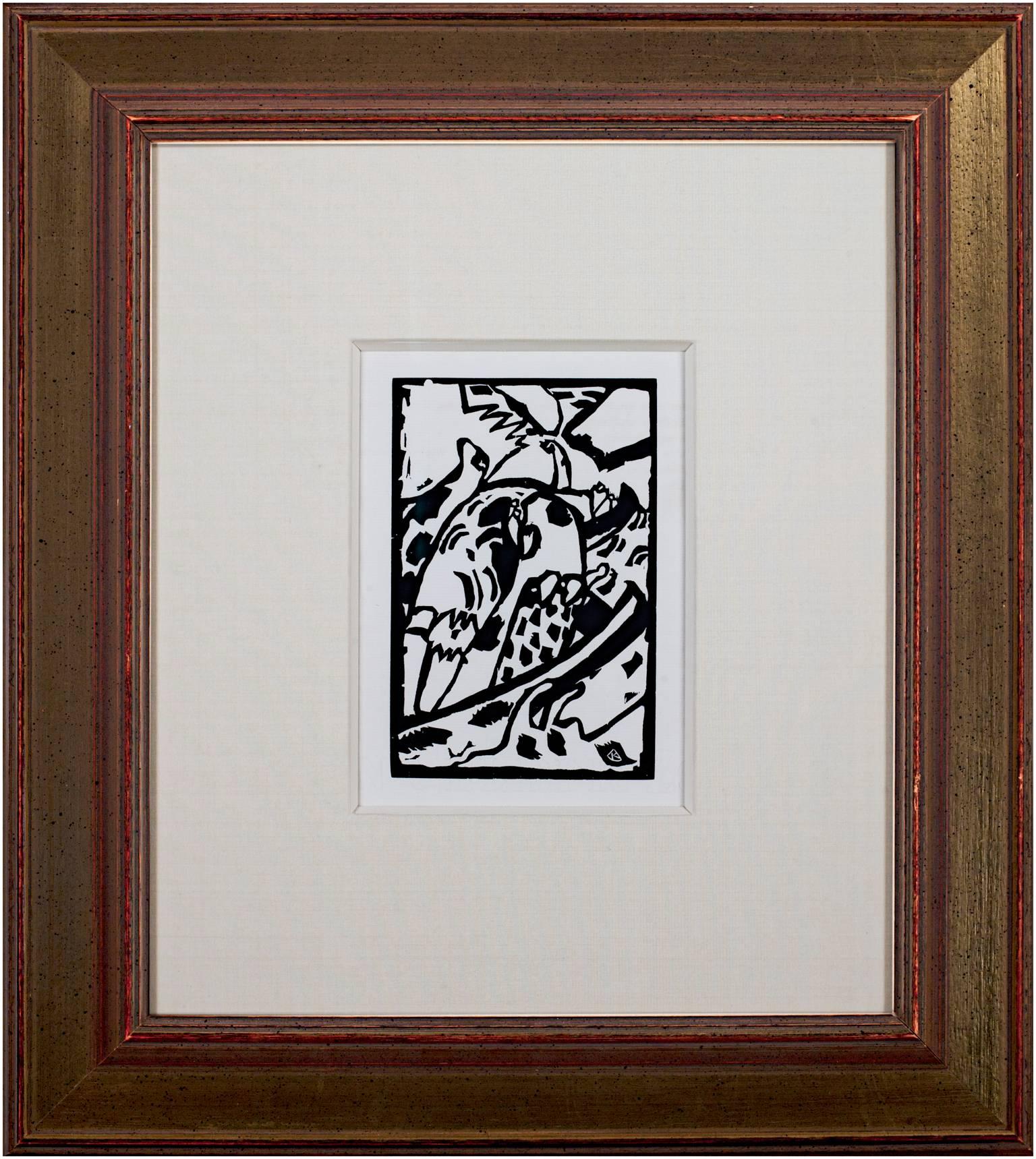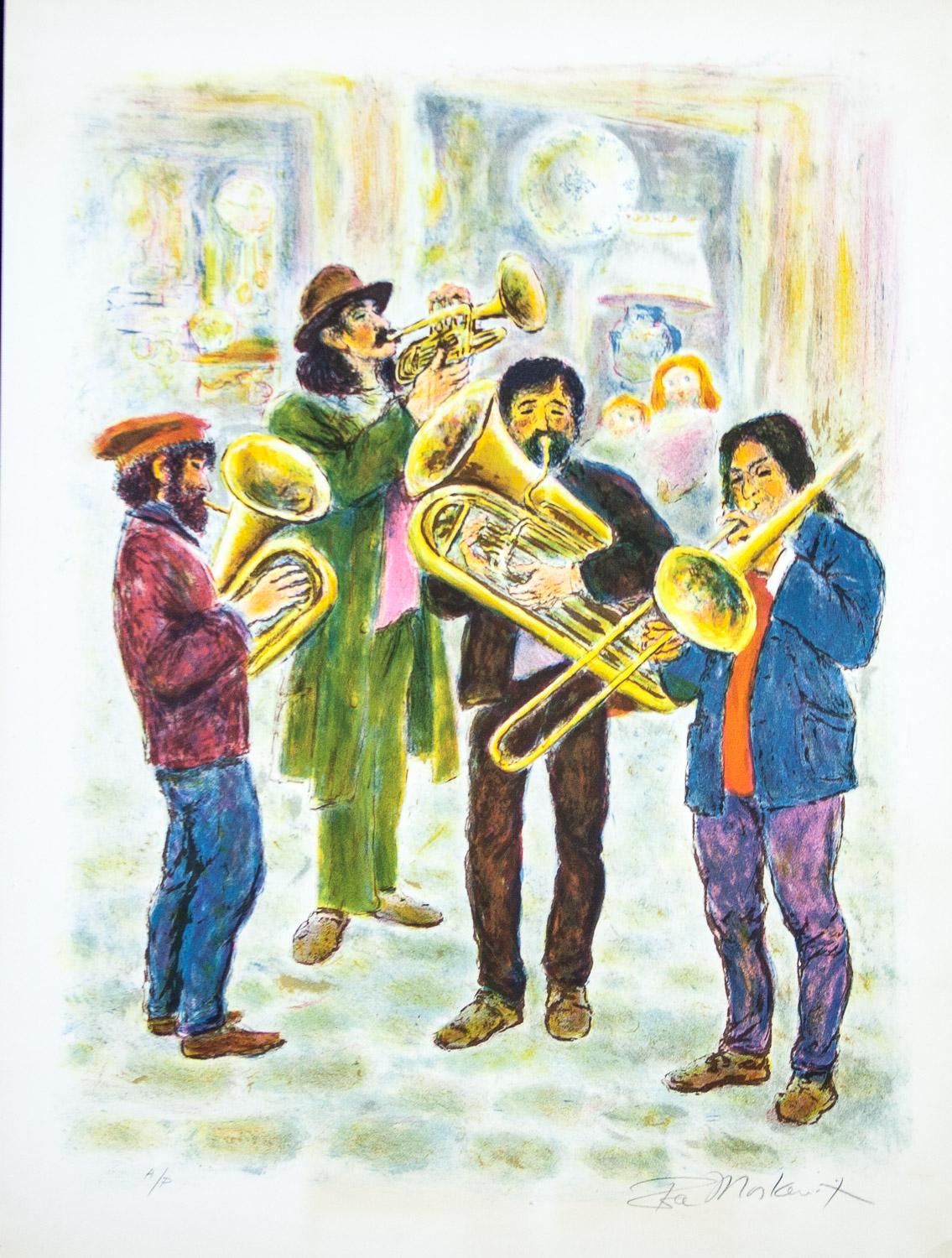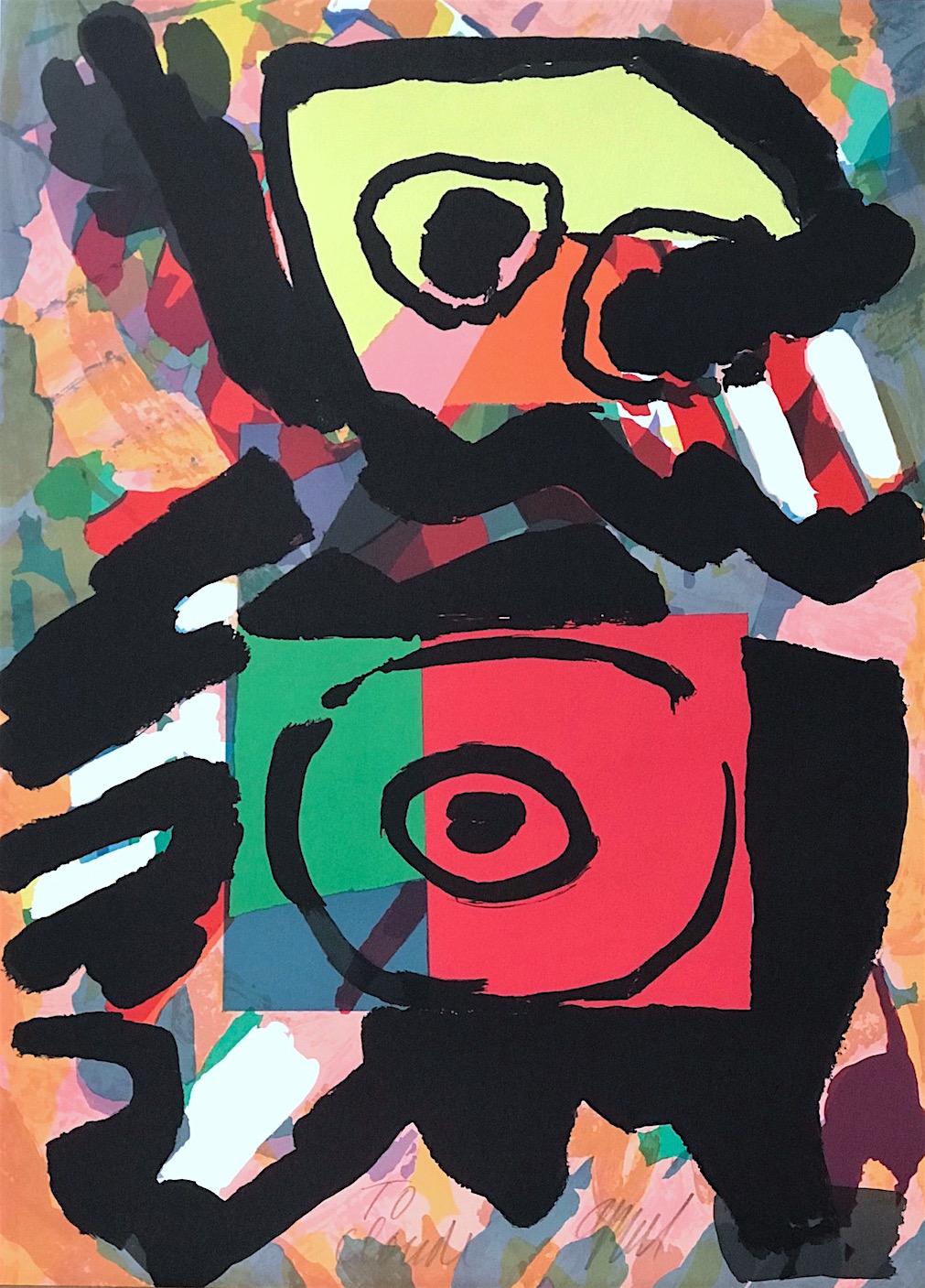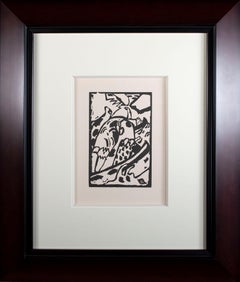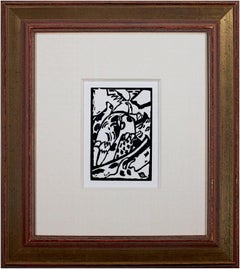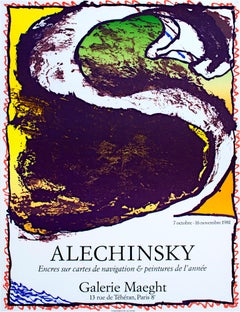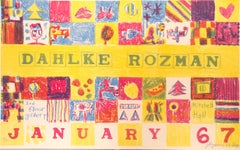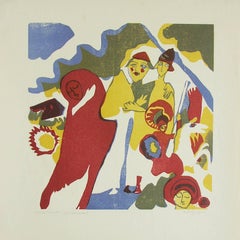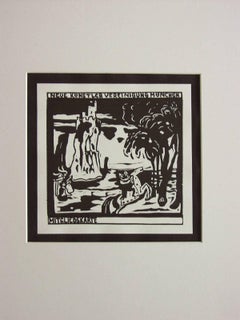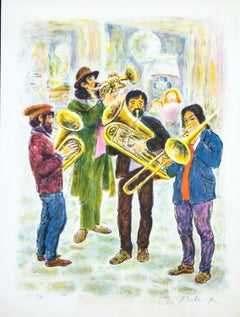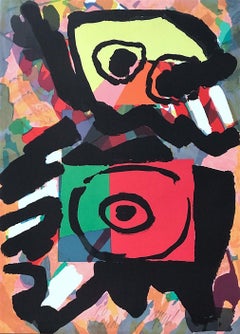Items Similar to 'Nuits de la Fondation Maeght' lithograph event poster
Want more images or videos?
Request additional images or videos from the seller
1 of 8
'Nuits de la Fondation Maeght' lithograph event poster1971
1971
About the Item
This poster, published in 1971 for the Fondation Maeght, proudly boasts a lithographic rendering of Wassily Kandinsky's 1922 mural plans for the Juryfreie exhibition in Germany. It was in 1922 that Kandinsky was invited to teach at the Bauhaus in Weimar, Germany. There, he threw himself into an intensive period of artistic and theoretical production. With his students, the painter worked on monumental decors, including this mural cycle. The Bauhaus was closed in 1933 under the risign threat of Nazism, and Kandinsky ended this creative period and left for France. The composition places bursting forms of color against a dark black background, emblematic of the modern master's expressionist style. Unsigned.
This poster has been cut down from its original size. The text originally at the bottom is included on the back of the frame.
21 x 22.13 inches, artwork
29.5 x 30.88 inches, frame
Published by Imprimerie Arte Paris
Framed to conservation standards using archival materials including 100 percent rag mounting, UF5 Plexiglas to inhibit fading, and housed in a silver finish wood moulding.
Wassily Wassilyevich Kandinsky (16 December 1866 – 13 December 1944) was an influential Russian painter and art theorist. He is credited with painting the first purely abstract works. Born in Moscow, Kandinsky spent his childhood in Odessa. He enrolled at the University of Moscow, studying law and economics. Successful in his profession—he was offered a professorship (chair of Roman Law) at the University of Dorpat—he began painting studies (life-drawing, sketching and anatomy) at the age of 30.
In 1896 Kandinsky settled in Munich, studying first at Anton Ažbe's private school and then at the Academy of Fine Arts. He returned to Moscow in 1914, after the outbreak of World War I. Kandinsky was unsympathetic to the official theories on art in Communist Moscow, and returned to Germany in 1921. There, he taught at the Bauhaus school of art and architecture from 1922 until the Nazis closed it in 1933. He then moved to France where he lived for the rest of his life, becoming a French citizen in 1939 and producing some of his most prominent art. He died at Neuilly-sur-Seine in 1944.
- Creation Year:1971
- Dimensions:Height: 29.5 in (74.93 cm)Width: 30.88 in (78.44 cm)
- Medium:
- Movement & Style:
- After:Wassily Kandinsky (1866 - 1944, Russian)
- Period:
- Condition:
- Gallery Location:Milwaukee, WI
- Reference Number:Seller: 5434g1stDibs: LU60536506952
About the Seller
4.9
Gold Seller
Premium sellers maintaining a 4.3+ rating and 24-hour response times
Established in 1966
1stDibs seller since 2017
429 sales on 1stDibs
Typical response time: 2 hours
- ShippingRetrieving quote...Shipping from: Milwaukee, WI
- Return Policy
Authenticity Guarantee
In the unlikely event there’s an issue with an item’s authenticity, contact us within 1 year for a full refund. DetailsMoney-Back Guarantee
If your item is not as described, is damaged in transit, or does not arrive, contact us within 7 days for a full refund. Details24-Hour Cancellation
You have a 24-hour grace period in which to reconsider your purchase, with no questions asked.Vetted Professional Sellers
Our world-class sellers must adhere to strict standards for service and quality, maintaining the integrity of our listings.Price-Match Guarantee
If you find that a seller listed the same item for a lower price elsewhere, we’ll match it.Trusted Global Delivery
Our best-in-class carrier network provides specialized shipping options worldwide, including custom delivery.More From This Seller
View All'Improvisation 7' second ed. woodcut from 'Klänge' by Wassily Kandinsky
By Wassily Kandinsky
Located in Milwaukee, WI
'Improvisation 7' second ed. woodcut from 'Klänge' is a woodcut print created by Wassily Kandinsky. The present woodcut print comes from the second edition of 'Klänge (Sounds),' a book of original graphics and poetry by Wassily Kandinsky. The title of the album and of this print, 'Improvisation,' demonstrated Kandinsky's interest in music and how abstract musical forms could be translated into images on a two-dimensional surface. This particular composition is difficult to read, but through the abstraction, one can make out various figures and a landscape beyond. Originally carved and printed in 1911, this second edition print was done ca. 1938. It is a woodcut in black ink on woven paper. Signed with encircled 'K' in the block, lower right (from the book, signed in ink, ed. 117/300)
Image Size: 7 1/2" x 5 inches
Frame Size: 22 1/4" x 18 3/4"
Ref. Roethel 124
Artist Bio:
The Museum of Modern Art described 'Klänge (Sounds)' as follows:
Vasily Kandinsky's self-described "musical album," Klänge (Sounds), consists of thirty-eight prose-poems he wrote between 1909 and 1911 and fifty-six woodcuts he began in 1907. In the woodcuts Kandinsky veiled his subject matter, creating increasingly indecipherable images (though the horse and rider, his symbol for overcoming objective representation, runs through as a leitmotif). This process proved crucial for the development of abstraction in his art. Kandinsky said his choice of media sprang from an "inner necessity" for expression: the woodcuts were not merely illustrative, nor were the poems purely verbal descriptions. Kandinsky sought a synthesis of the arts, in which meaning was created through the interaction of, and space between, text and image, sound and meaning, mark and blank space. The experimental typography shows his interest in the physical aspects of the book.
Klänge is one of three major publications by Kandinsky that appeared shortly before World War I, alongside Über die Geistige in der Kunst (Concerning the Spiritual in Art) and the Blaue Reiter almanac...
Category
1910s Blue Rider Abstract Prints
Materials
Woodcut, Laid Paper
'Improvisation 7' original first ed. woodcut from 'Klänge' by Wassily Kandinsky
By Wassily Kandinsky
Located in Milwaukee, WI
The present woodcut print comes from 'Klänge (Sounds),' a book of original graphics and poetry by Wassily Kandinsky. This first edition was released in an edition of 300, each book signed and numbered by the artist. The title of the album and this particular print, 'Improvisation,' demonstrated Kandinsky's interest in music and how abstract musical forms could be translated into images on a two-dimensional surface. This particular composition is difficult to read, but through the abstraction, one can make out various figures and a landscape beyond.
7.5 x 5 inches, image
22 x 19.5 inches, frame
Woodcut in black ink on laid paper (watermark Van Gelder Zonen)
Signed with encircled 'K' in the block, lower right
Framed to conservation standards using 100 percent acid free archival materials including silk-lined matting with 1/4 inch bevel, museum glass, and a gold-gilded moulding
Ref. Roethel 124
The Museum of Modern Art described 'Klänge (Sounds)' as follows:
Vasily Kandinsky's self-described "musical album," Klänge (Sounds), consists of thirty-eight prose-poems he wrote between 1909 and 1911 and fifty-six woodcuts he began in 1907. In the woodcuts Kandinsky veiled his subject matter, creating increasingly indecipherable images (though the horse and rider, his symbol for overcoming objective representation, runs through as a leitmotif). This process proved crucial for the development of abstraction in his art. Kandinsky said his choice of media sprang from an "inner necessity" for expression: the woodcuts were not merely illustrative, nor were the poems purely verbal descriptions. Kandinsky sought a synthesis of the arts, in which meaning was created through the interaction of, and space between, text and image, sound and meaning, mark and blank space. The experimental typography shows his interest in the physical aspects of the book.
Klänge is one of three major publications by Kandinsky that appeared shortly before World War I, alongside Über die Geistige in der Kunst (Concerning the Spiritual in Art) and the Blaue Reiter almanac...
Category
1910s Blue Rider Abstract Prints
Materials
Woodcut
"Encres sur cartes de navigation & peintures de l'annee, " Litho by Alechinsky
Located in Milwaukee, WI
"Encres sur cartes de navigation & peintures de l'annee" is an original color lithograph poster by the artist Pierre Alechinsky. It is advertising a show of his works at the Galerie Maeght in Paris, France November 1981.
Beligian artist; Lives and works in France, since 1951. Pierre Alechinsky enrolled at the École Nationale Superieur d'Architecture et des Arts Décoratifs in Brussels in 1944 and attended classes of book illustration and typography. In 1947 he joined the group Jeune Peinture Belge. After finishing his artistic training in 1948, Alechinsky went to Paris for five months. Having returned to Brussels he met with the poet Christian Dotremont and joined the group COBRA in 1949, of whose semi-abstract Expressionism he was formed decisively in 1950. A scholarship by the French government led the artist to Paris in 1951. In 1954 Alechinsky met the Chinese artist Walasse Ting, who inspired him to travel to the Far East. Impressed by Japanese calligraphy he produced a movie on script art...
Category
21st Century and Contemporary Neo-Expressionist Abstract Prints
Materials
Lithograph
"Dahlke-Rozman, Exhibition Poster, " Original Color Lithograph by Joseph Rozman
By Joseph Rozman
Located in Milwaukee, WI
"Dahlke-Rozman, Exhibition Poster" is an original color lithograph by Joseph Rozman. Rozman signed the work on the lower right side. This artwork advertises an exhibition of works by...
Category
1960s Pop Art Abstract Prints
Materials
Lithograph
Late 19th century color lithograph art nouveau ornate bookplate
By Alphonse Mucha
Located in Milwaukee, WI
"Title Page" and "Art Nouveau Motif" are two sides of one double-sided original lithograph by Art Nouveau master Alphonse Mucha. These illustrations were from "Ilsee, Princess of Tri...
Category
1890s Art Nouveau Portrait Prints
Materials
Lithograph
Late 19th century color lithograph art nouveau ornate bookplate figures floral
By Alphonse Mucha
Located in Milwaukee, WI
"Dream Weavers" and "Soul of the Land" are two sides of a double-sided lithograph by Alphonse Mucha. These illustrations were created for "Ilsee, Princess of Tripoli" and are the rare proofs before the text. These artworks were for pages 31 and 32.
8" x 6 1/4" art
19 1/4" x 17 1/8" frame
Alphonse Mucha was born in 1860 in the small town of Ivancice, Monrovia. Though it is rumored that Mucha was drawing before he was walking, his early years were spent as a choirboy and amateur musician. It wasn’t until after he finished high school that he came to realize that living people were responsible for the art that he admired in the local churches. That epiphany made him determined to become a painter. He was soon sent off to Paris, where he studied at the Academie Julian. On January 1, 1985, he presented his own new style to the citizens of Paris. Spurning the bright colors and the more square-like shape of the more popular poster artists, the design was a sensation. Art Nouveau can...
Category
1890s Art Nouveau Figurative Prints
Materials
Lithograph
You May Also Like
Allerheiligen- All Saints Day.
By Wassily Kandinsky
Located in New York, NY
KANDINSKY, Wassily. Allerheiligen- All Saints Day. Original three-color woodcut (red, yellow ochre, blue – with olive green). 1911. Signed with the monogram...
Category
1910s Blue Rider Abstract Prints
Materials
Woodcut
Price Upon Request
Felson,
By Wassily Kandinsky
Located in New York, NY
Black and White Woodcut. Published in 1909 in an edition of 100 to be used as a card member for the group of artists "Neu Kunstler-Vereingun Munchen". The impression is complete in ...
Category
1910s Blue Rider Abstract Prints
Materials
Woodcut
Price Upon Request
Street Musicians by Ira Moskowitz original lithograph
By Ira Moskowitz
Located in Paonia, CO
Street Musicians by Ira Moskowitz shows four musicians playing various horn instruments including trumpets and trombones. Behind them some childre...
Category
20th Century Expressionist Figurative Prints
Materials
Lithograph
MULTI PERSONAGE Signed Lithograph, Abstract Collage Portrait, CoBrA Artist
By Karel Appel
Located in Union City, NJ
MULTI PERSONAGE is an original limited edition lithograph by the Dutch artist Karel Appel, printed using hand lithography techniques on archival Arches paper, 100% acid free. MULTI PERSONAGE is a lively abstract color collage portrait expressed in vibrant shades of red, blue, pink, green, purple, yellow with hints of multi color pastel tones and white creating an abstracted body and face. Bold black paint strokes define the face with its zany black eyes, head, body and limbs; collage effect torn paper bits fill in the body form. MULTI PERSONAGE is a very unique, fantastically playful and wild composition by Karel Appel, one of the founders of the avant-garde art movement CoBrA active during the late 1940's thru early 1950's. His paintings are known for incorporating applications of vibrant, violent colors often possessing a primal, childlike quality.
Print size - 30 x 20 inches, unframed, excellent condition, pencil signed by Karel Appel
Edition size - 175
Year published - 1980
Printer - JK Fine Art Editions Co., NY
Karel Appel was one of the founders of the avant-garde art movement CoBrA, active during the late 1940's thru early 1950's. His paintings are known for incorporating applications of vibrant, violent colors often possessing a primal, childlike quality.
Karel Appel, (born April 25, 1921, Amsterdam, Netherlands—died May 3, 2006, Zürich, Switzerland), Dutch painter of turbulent, colorful, and semi-abstract compositions, who was a co-founder (1948) of the CoBRA group of northern European Expressionists. He was also a noted sculptor and graphic artist.
Appel attended the Royal Academy of Fine Arts, Amsterdam (1940–43), and helped found the “Reflex” group, which became known as CoBRA (for Copenhagen, Brussels, and Amsterdam), in 1948. He moved to Paris in 1950 and by the 1960s had settled in New York City; he later lived in Italy and Switzerland. Partly in reaction against what they perceived as the sterile academicism of the de Stijl movement, the CoBRA artists...
Category
1980s Expressionist Portrait Prints
Materials
Lithograph
Shusaku Arakawa Japanese Artist 1977 original vintage poster lithograph print
By Shusaku Arakawa
Located in Miami, FL
Shusaku Arakawa (Japan, 1936-2010)
'Galerie Maeght', 1977
Original poster from exhibition of 1977
lithograph on paper
23.7 x 17.8 in. (60 x 45 cm.)
Unframed
Ref: ARA100-201
Shusaku ...
Category
1970s Expressionist Abstract Prints
Materials
Lithograph
Vintage 1970s Kennedy Galleries poster, Hand signed & warmly inscribed by artist
By Jack Levine
Located in New York, NY
Jack Levine
Vintage 1970s Kennedy Galleries poster (Hand signed and warmly inscribed), 1972
Offset lithograph poster (Signed, dated and inscribed in black marker by Jack Levine)
Sign...
Category
1970s Expressionist Portrait Prints
Materials
Lithograph, Offset
